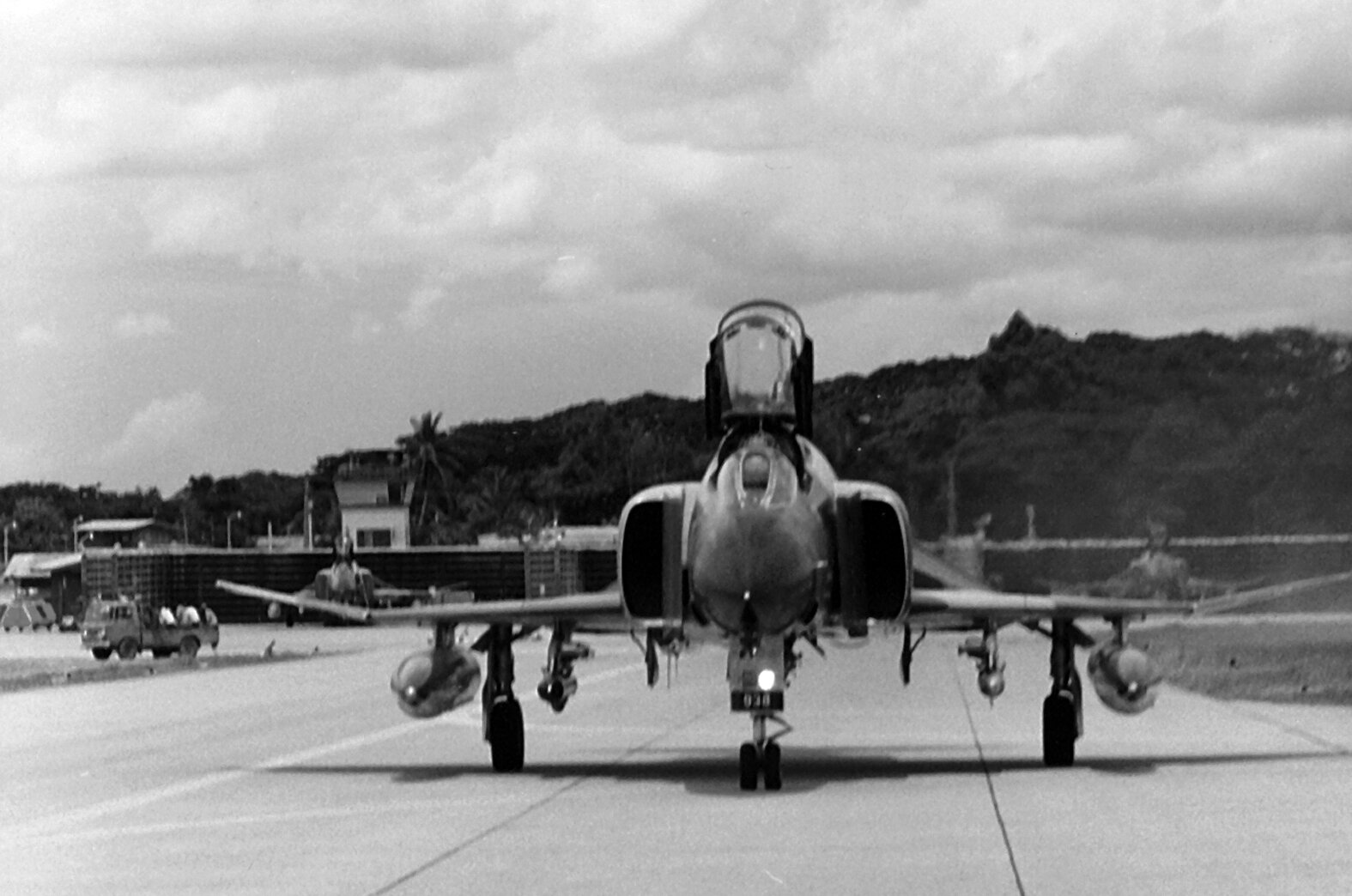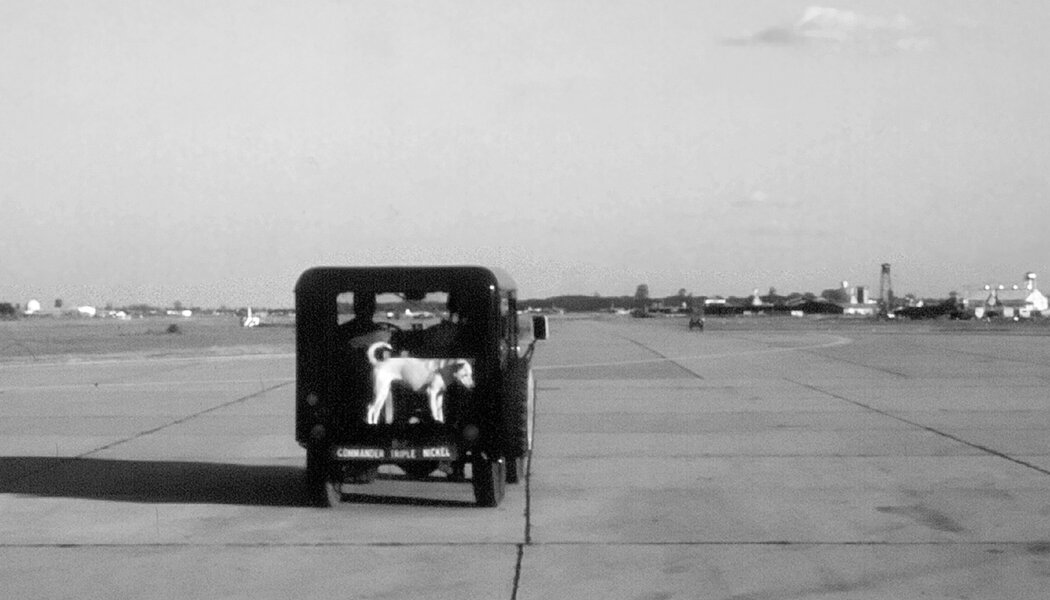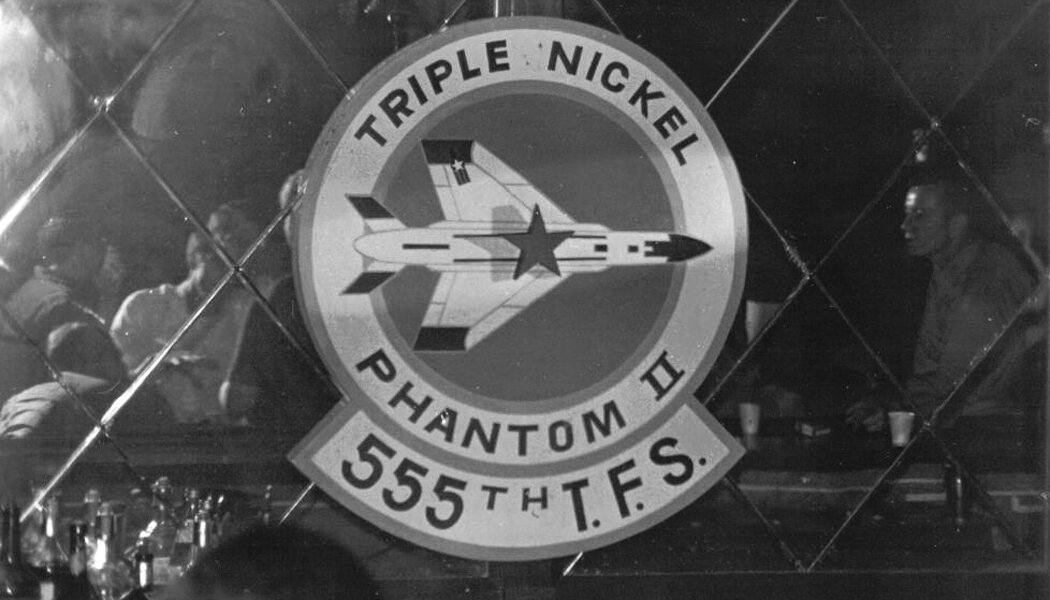Read or listen to the chapter.
“In war there is no substitute for victory.”
Triple Nickel Delivers
On the morning of February 22, 1972, I walked into the club to find the Triple Nickel's Jeep parked in the lobby. On top of the Jeep was a wood-carved elephant wearing a Triple Nickel hat. Painted on the window was "One for the Christians! Shit Hot from the Alley Cats." They were celebrating something. After I read the night log, I realized that the Nickel had shot down a MiG and closed down the bar. At first I was annoyed by the antics, but soon realized what an important symbol this was to them and simmered down. A call from the Wing Commander telling me, "Not to sweat the small stuff," also helped.
Operation Linebacker was in full swing. With the initiation of the "Protective Reactive Strikes" the lid was off on restricted targets. We were back in business. The bombing over North Vietnam had restarted. As a result, the Triple Nickel was the first to shoot down a MiG-21.(1) Major Robert Lodge and Lieutenant Roger Locher were the victorious crew. To celebrate, some pilots, whom I'm sure were egged on by their wacky Squadron Commander, Lieutenant Colonel Joe Kittinger, decided to drive their squadron Jeep up a half-dozen stairs, through the swinging doors of the o-club, and park it in the lobby.
Kittinger, a redheaded wild man, sometimes still acted like a high school kid trying to get away with drag racing in his father's car. He was a man's man and didn't think the military was any place for a woman. He earned his outrageous reputation while doing test pilot experiments for the Air Force. In 1960, they wanted to determine from what altitude a crewman could free fall and still stay alive. Kittinger signed up for the job. He wore a pressure suit and layers of clothes to protect him from experiencing the severe cold at minus 94 degrees Fahreheit. At 102,800 feet he jumped out of an open gondola, free fell for 13 seconds, and then his six-foot canopy opened to stabilize him. After four-and-a-half additional minutes, traveling at 614 miles per hour, almost the speed of sound, he descended to 17,500 feet where his regular 28-foot parachute deployed allowing him to land safely in the New Mexico desert. This feat proved to be historic and established that a man could survive a descent from high altitudes. It also put Kittinger's name in the aviation record books.(2)
Kittinger was an adrenaline junkie, always wanting to raise the ante. Some saw him as courageous and brave while others characterized him as flamboyant and a reckless risk-taker. I believed he was a little of both.
I decided to call Kittinger. "Good morning, Colonel Kittinger. This is Captain Pilato." Before I could get out another word, he started in on me, "Angel, before you tell me that my boys did some damage to the officers' club by driving our Jeep into the lobby, I just wanna let you know we'll get the Jeep out of your lobby in due time. But Angel, these guys deserve to celebrate a little. After all, this is the first MiG the Air Force has downed since 1968, and there's no need to get your tit in a wringer over a little Jeep parked in the lobby."
"You're absolutely right, sir. The fact is, Colonel, I was just calling to congratulate you and the Triple Nickel on your MiG kill and to say Shit Hot. And, go get 'em."
"Well...ah...thanks for the call," he said. I could tell my response had taken him by surprise.
"Just one thing. There's no problem with the Jeep being in the lobby. I'd like to ask you to have a couple of the guys come over and put a tarp under the truck to keep the engine grease from leaking on the carpet."
"Oh, sure, we can do that, and we'll have the Jeep out of there in a few days."
"Thanks, Colonel. Enjoy your day and your victory."
A week later, on March 1 st , Kittinger and Lieutenant Leigh Hodgdon shot down another MiG-21-and in rolled the Jeep. That's how it all got started. Now the stage was set, every squadron that scored a MiG kill was going to want to drive their truck into the club.
On May 11, 1972, just seven days before he was to end his third tour of duty in SEA, Kittinger was shot down, captured, and became one of the 801 POWs held during the Vietnamese War. On March 23, 1973, after 321 days in captivity, he was released. Welcome home, Joe!(3)





(1) MIG-21 is an advanced supersonic single-engine jet built by Mikoyan-Gurevich Design Bureau. It can travel more than twice the speed of sound and provided a formidable challenge to the F-4 Phantom.
(2) Read the full story of Joe Kittinger’s Famous Death Defying Leap by Elizabeth Hanes, October 5, 2012. https://www.airforcemag.com/article/kittinger/
(3) Information on POWs from the Library of Congress The Vietnam-Era Prisoner-of-War/Missing-in-Action Database. http://lcweb2.loc.gov/pow/powhome.html



